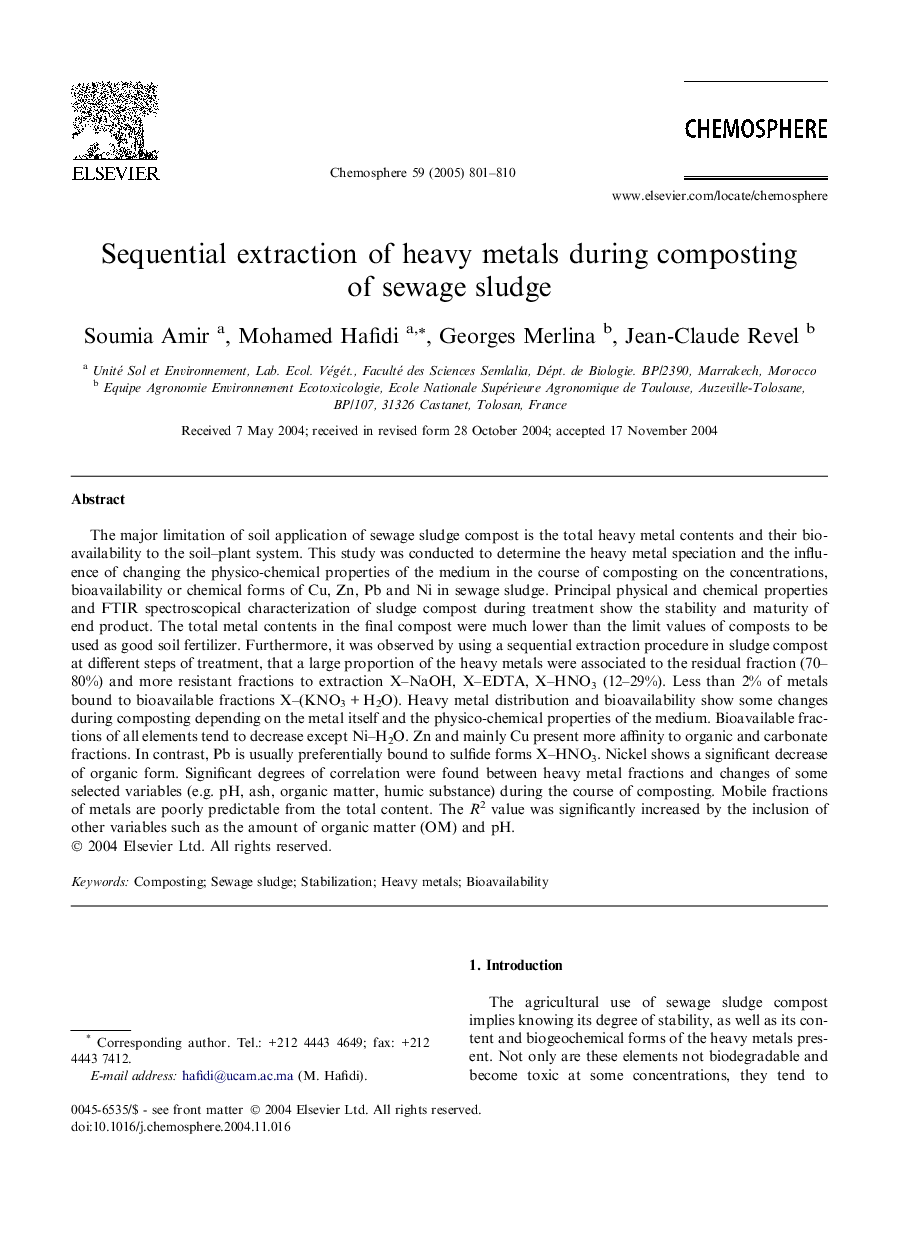| کد مقاله | کد نشریه | سال انتشار | مقاله انگلیسی | نسخه تمام متن |
|---|---|---|---|---|
| 9451685 | 1307836 | 2005 | 10 صفحه PDF | دانلود رایگان |
عنوان انگلیسی مقاله ISI
Sequential extraction of heavy metals during composting of sewage sludge
دانلود مقاله + سفارش ترجمه
دانلود مقاله ISI انگلیسی
رایگان برای ایرانیان
کلمات کلیدی
موضوعات مرتبط
علوم زیستی و بیوفناوری
علوم محیط زیست
شیمی زیست محیطی
پیش نمایش صفحه اول مقاله

چکیده انگلیسی
The major limitation of soil application of sewage sludge compost is the total heavy metal contents and their bioavailability to the soil-plant system. This study was conducted to determine the heavy metal speciation and the influence of changing the physico-chemical properties of the medium in the course of composting on the concentrations, bioavailability or chemical forms of Cu, Zn, Pb and Ni in sewage sludge. Principal physical and chemical properties and FTIR spectroscopical characterization of sludge compost during treatment show the stability and maturity of end product. The total metal contents in the final compost were much lower than the limit values of composts to be used as good soil fertilizer. Furthermore, it was observed by using a sequential extraction procedure in sludge compost at different steps of treatment, that a large proportion of the heavy metals were associated to the residual fraction (70-80%) and more resistant fractions to extraction X-NaOH, X-EDTA, X-HNO3 (12-29%). Less than 2% of metals bound to bioavailable fractions X-(KNO3Â +Â H2O). Heavy metal distribution and bioavailability show some changes during composting depending on the metal itself and the physico-chemical properties of the medium. Bioavailable fractions of all elements tend to decrease except Ni-H2O. Zn and mainly Cu present more affinity to organic and carbonate fractions. In contrast, Pb is usually preferentially bound to sulfide forms X-HNO3. Nickel shows a significant decrease of organic form. Significant degrees of correlation were found between heavy metal fractions and changes of some selected variables (e.g. pH, ash, organic matter, humic substance) during the course of composting. Mobile fractions of metals are poorly predictable from the total content. The R2 value was significantly increased by the inclusion of other variables such as the amount of organic matter (OM) and pH.
ناشر
Database: Elsevier - ScienceDirect (ساینس دایرکت)
Journal: Chemosphere - Volume 59, Issue 6, May 2005, Pages 801-810
Journal: Chemosphere - Volume 59, Issue 6, May 2005, Pages 801-810
نویسندگان
Soumia Amir, Mohamed Hafidi, Georges Merlina, Jean-Claude Revel,